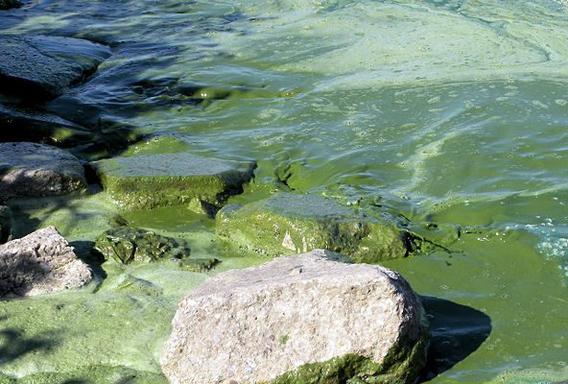
Evaluating Lake Superior as an economic, public health, recreational, and environmental resource.
Challenge: Harmful algal blooms (HABs) affect coastal resources as their drivers are not well understood, which complicates reduction efforts and impacts on coastal resources
Principal Investigator(s):
- Hilary Dugan (University of Wisconsin-Madison)
Cooperator/Partner(s):
- Hannah Ramage (Lake Superior National Estuarine Research Reserve)
- Madeline Magee (Wisconsin Department of Natural Resources)
- Brenda Lafrancois (National Park Service)
- Matt Hudson (Lake Superior Nearshore Monitoring Group)
Cyanobacteria blooms are one of the most significant management challenges in the Great Lakes today. Recurring blooms of varying toxicity are commonly observed in four of the Great Lakes, and the fifth, Lake Superior, has experienced intermittent nearshore blooms since 2012. The recent advent of cyanobacterial blooms in Lake Superior is disconcerting, given the highly valued, pristine water quality of the large lake. It is possible that the ecological state of Lake Superior is shifting and that we are witnessing the beginnings of larger and longer lasting bloom events.
As a public resource, the coastal water quality of Lake Superior has tremendous economic, public health, and environmental value, and therefore, preventing cyanobacterial blooms in Lake Superior is a high-priority management challenge. However, presently, managers have no viable options to respond to algal blooms in Lake Superior, as there is a lack of monitoring data that can resolve whether cyanobacterial blooms are arising out of changing climate conditions or whether reporting has increased.
This research project will fill knowledge gaps on the drivers of bloom formation and persistence by investigating both the history and the environmental triggers of cyanobacterial blooms in Lake Superior. Researchers are investigating whether cyanobacterial blooms are a recent phenomenon in Lake Superior, and if climate is driving bloom dynamics through temperature and/or nutrient delivery. To address these questions, researchers are reconstructing the occurrence of historical blooms from lake sediment cores and studying the role of storms in nutrient delivery from the streams, lakes and wetlands that lie along the Lake Superior coast. Results will lead to recommendations for land and water management strategies that might be employed to combat bloom frequency. Research is in collaboration with several management groups who are actively working on Lake Superior, including the Wisconsin Department of Natural Resources, the Lake Superior National Estuarine Research Reserve, and the National Park Service at the Apostle Islands.
Read more from the CASC Project Explorer.
